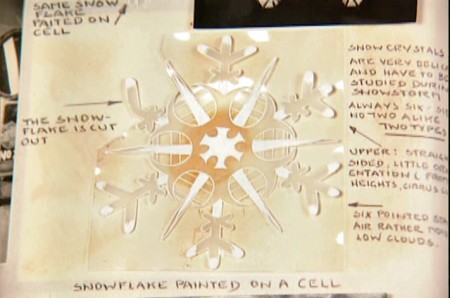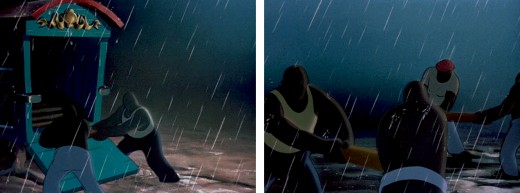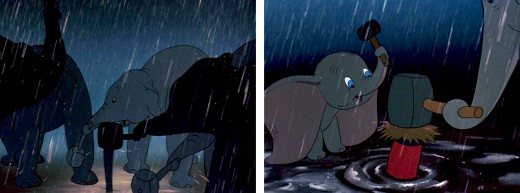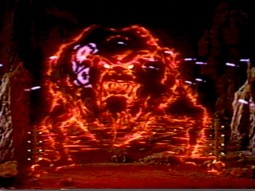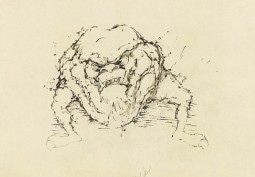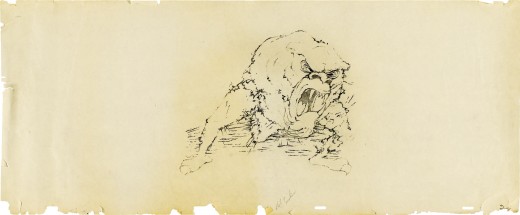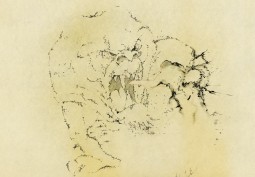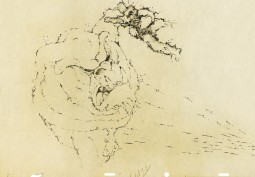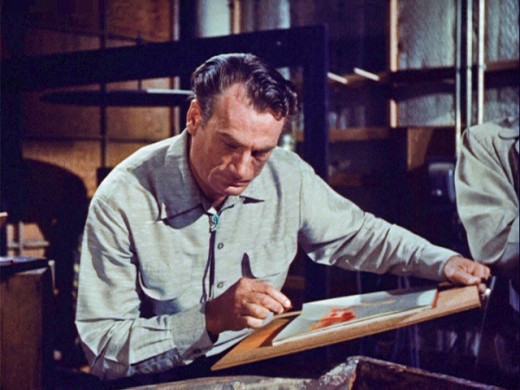Search ResultsFor "meador"
Animation &commercial animation &Illustration &John Canemaker 19 Sep 2013 01:05 am
John Canemaker’s Movies
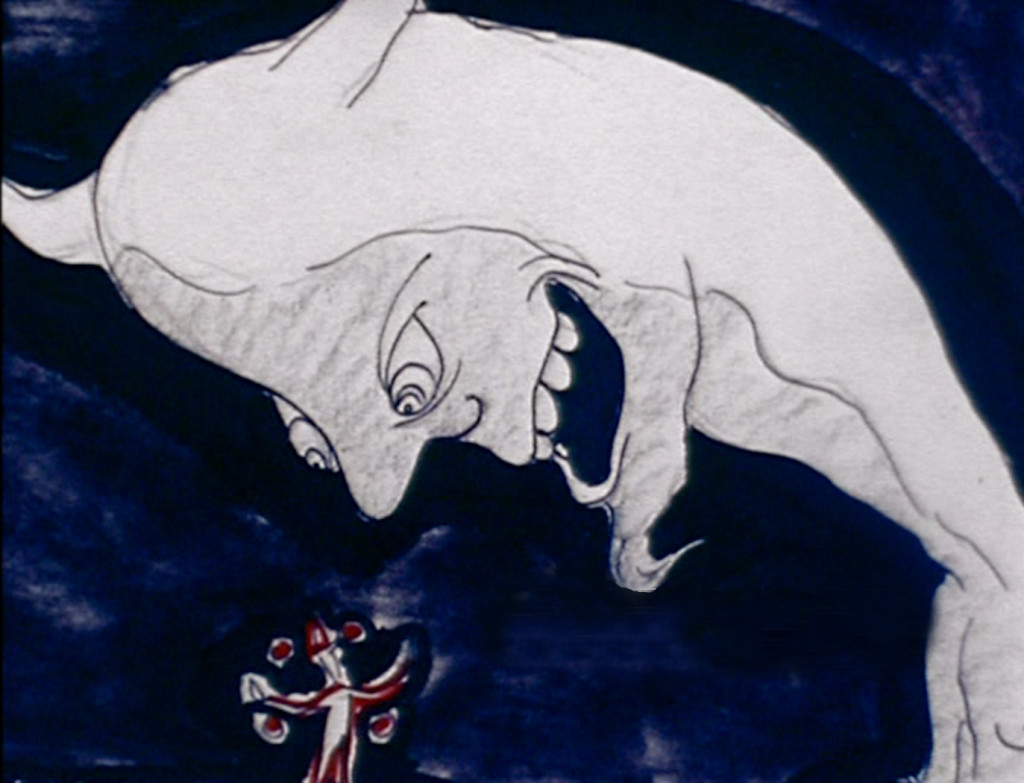 John Canemaker has been making animated movies for ever. I know because we both started at about the same time. Somewhere in the late Seventies we exchanged our early films to get a look at what each other was doing when we were younger. Leslie was tuning out a lot of footage imitating sequences I’d sen in the movies: a couple of dogs (certainly not Lady or Tramp) eating lunch, a limited animation vizier climbing pillars in imitation of 1001 Arabian Knight not with Mr. Magoo.
John Canemaker has been making animated movies for ever. I know because we both started at about the same time. Somewhere in the late Seventies we exchanged our early films to get a look at what each other was doing when we were younger. Leslie was tuning out a lot of footage imitating sequences I’d sen in the movies: a couple of dogs (certainly not Lady or Tramp) eating lunch, a limited animation vizier climbing pillars in imitation of 1001 Arabian Knight not with Mr. Magoo.
John didn’t do much in the way of limited animation; he told me he wasn’t able to figure it out. My own work was definitively derivative. I’d redone the Flintstones opening – my own version. Gay Purr-ee led to my attempt at animating the impressionists. I saw something in a theater or on TV and would immediately immitate it. I did a lot of live action/animation combinations. I was fascinated by the modern work. Title sequences to Saul Bass’ films led to my versions. Once I’d seen UPA – the Gerald McBoing Boing Show, I did my own variant. There was a comedy album called The First Family.Vaughn Meador and other comedians impersonated the First family – the Kennedys – singing song parodies of the time. I did my parody of these sung-through albums that quickly lost synch. But you could see the effort that had been taken.
Whereas John worked only in 2D cel animation, I brought out lots of other wares. Clay was easy to animate and allowed me to turn out footage fast.
When we screened them for each other, we were both impressed even though we had to trade off the films and watch them privately. We both did great work; we both did horrible work. My father and brother-in-law constructed a multiplane set with about 16 levels of glass (easily 18″x24″) with about 8000 watts of light. I had my take on Fantasia to work out.
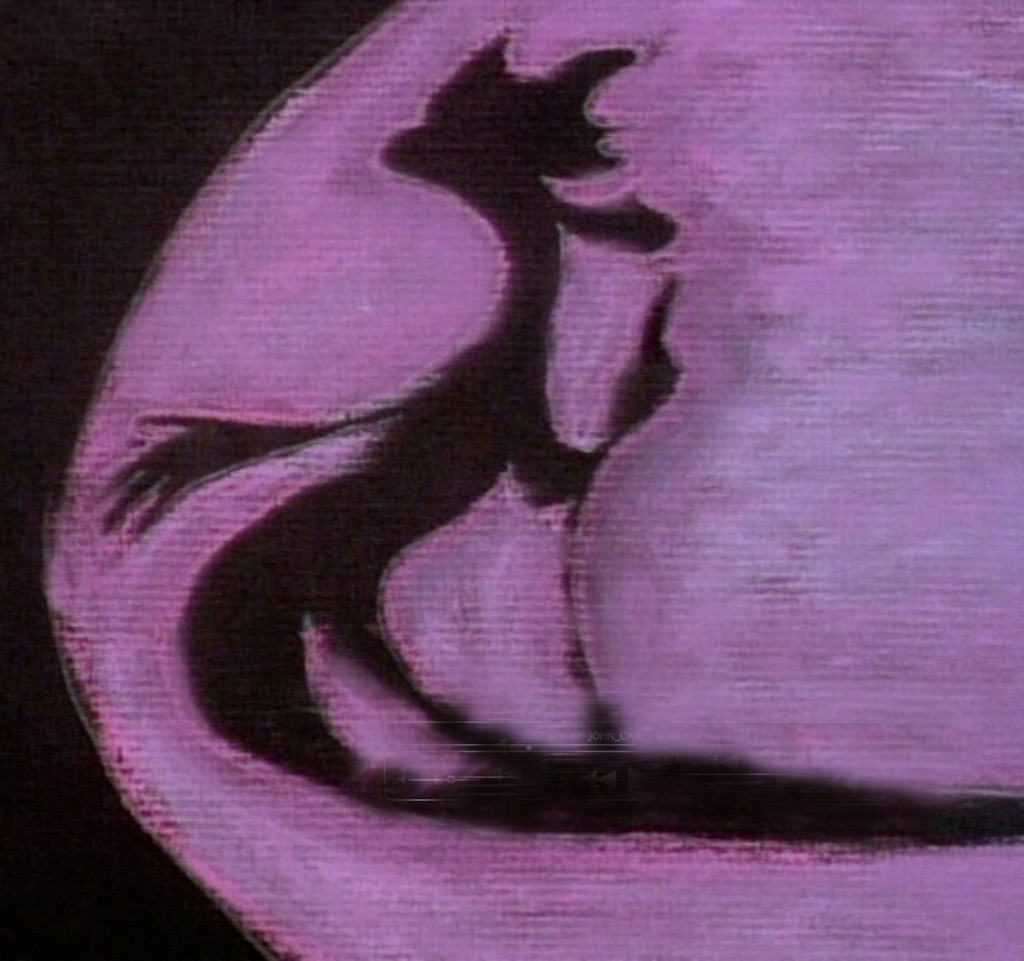 John’s early films – not those we’d shared with each other, but his more professional work – now have a DVD all their own, and I’d
John’s early films – not those we’d shared with each other, but his more professional work – now have a DVD all their own, and I’d
like to talk about these pieces. The DVD, John Canemaker – Marching to a Different Toon will permanently act as a good sampling of one artist’s view of the world. It presents a multiplicity of styles with a wide range of subject matter.
Bottom’s Dream feels like a sketch out of Fantasia as we see a short piece derived from Shakespeare’s “Midsummer’s Night Dream.” Once Titania has turned Bottom into an ass there is a dance wherein he’s trying to escape from the curse. Composer, Ross Care brings Mendelsohn’s music to life as the film’s backdrop.
Confessions of a Star Dreamer features the actress, Diane Gardner, expressing the problems and joys of becoming an Actress. Confessions of a Comic did the same for an aspiring young stand-up comic. Several sequences froom some of the excellent documentaries are also incuded:Break the Silence: Kids Against Child Abuse (TV Movie documentary) (animator), 1988 You Don’t Have to Die (Documentary short), The World According to Garp’s animated seqeunces are also included.
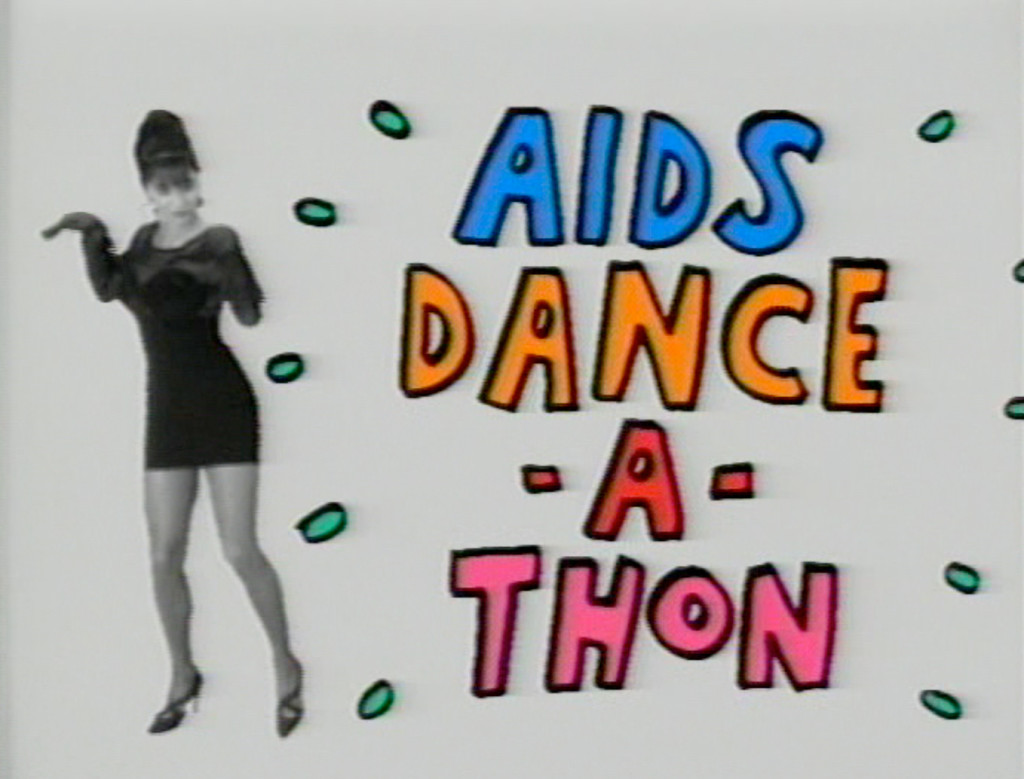 I love the short Bridgehampton, which animates the beautiful garden John and his companion Joe Kennedy, hae developed over the years (see some photos of the actual garden here.) It’s a wonderful little spot on the earth and how joyful for John to make a film paying tribute to his own little bit of nature.
I love the short Bridgehampton, which animates the beautiful garden John and his companion Joe Kennedy, hae developed over the years (see some photos of the actual garden here.) It’s a wonderful little spot on the earth and how joyful for John to make a film paying tribute to his own little bit of nature.
These films were all done just prior to John’s Oscar winning short, The Moon and the Son: An Imagined Conversation, which is featured on its own DVD.
This is a rare collection of shorts and one you’ll enjoy if you want to know more about the fame animation historian/animator.
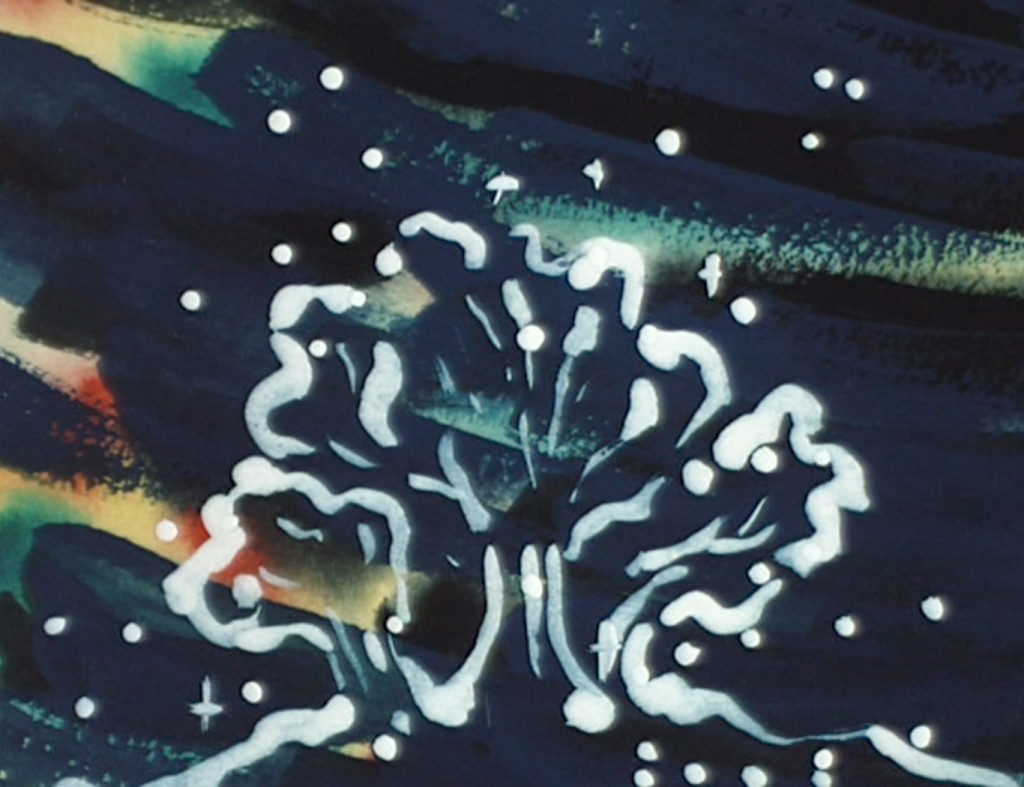
Commentary &Daily post 05 Jan 2013 08:20 am
Animator names?
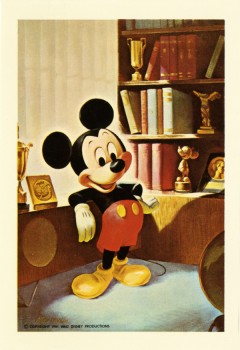 I’ve been an animation fan forever. Back in the fifties (when I wasn’t yet in my teens) I wrote fan letters to Joshua Meador, Bill Justice, and Art Riley. I don’t know if any of them ever received any of my letters, since I always got back a 4″x6″ postcard from Walt Disney thanking me. Mind you, these cards were always interesting and different, so I’m not sorry to have received them.
I’ve been an animation fan forever. Back in the fifties (when I wasn’t yet in my teens) I wrote fan letters to Joshua Meador, Bill Justice, and Art Riley. I don’t know if any of them ever received any of my letters, since I always got back a 4″x6″ postcard from Walt Disney thanking me. Mind you, these cards were always interesting and different, so I’m not sorry to have received them.
In the sixties, Mike Barrier‘s Funnyworld Magazine opened the world to interviews with some real animators. Then you’d start to see similar articles in the likes of Millimeter or Film Comment. Chuck Jones and Tex Avery got lots of attention. I saved and cherished those issues. Hell, I just about memorized them. ASIFA East brought Bob Clampett and a dozen other animators from Yoji Kuri to Frank Thomas & Ollie Johnston to our little New York corner of the world.
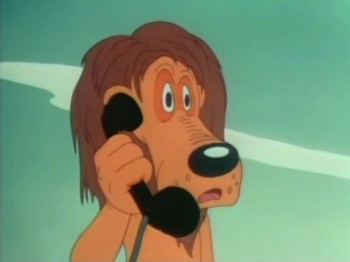 The point is that we got to know who a lot of animators were.
The point is that we got to know who a lot of animators were.
I could tell what scenes Ollie Johnston had done from those that Milt Kahl had done; I can easily identify Bobe Cannon‘s work from Ken Harris‘. (Can anyone but Cannon have drawn with such beautifully rounded lines as can be seen in the lion on the right?
No, that’s purely his work, and it’s there from the earliest right through to Moonbird. Just brilliant!)
{Check out this whole post on John Kricfalusi‘s site in 2006. Gorgeous.}
It became, really, the era of the animator. Many of them were deified by others like me, and deservedly so, even though others remained in obscurity. Watching stars like Dick Williams bring Harris and Hubley and Babbitt to London to train his staff brought fame to the little British studio. Dick soon brought as many famous animators to Raggedy Ann in New York. A star-studded staff assembled, for the first time, for their celebrity and ability and personality. (Star animators rather than star voices. Too bad there was no star writer.)
And Jim Tyer! There’s a whole cult of people who rally around Tyer’s work, and that pleases me. No one I knew, when I was a child, had any idea who Tyer was, but I searched every Mighty Mouse show on Saturday morning TV for a cartoon that had something of Tyer’s work on it. And of course, if you’re going to mention Tyer you have to talk about Rod Scribner. Bob Clampett wouldn’t be the same without Scribner’s scenes. One was East coast, one was West. One distorted the character off all semblance of drawing rules, the other distorted beyond belief (but probably – in his own way – kept the masses the same.)
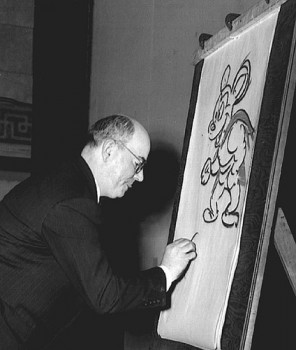
We can all spot his work a mile off.
It’s Jim Tyer
This same rise to fame continued with some of the new guard. Glen Keane and Andreas Deja led a league of youngsters such as Eric Goldberg and Ruben Aquino and many others to small fame within the industry as the new golden era came to the Hollywood studios.
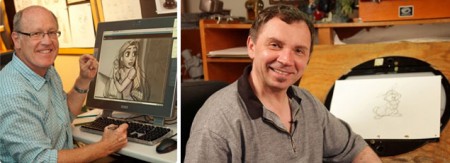
Meed I identify? Glen Keane & Andreas Deja.
Any good student can list off dozens of such names and can tell you what scenes they’ve done. The point that I’m ultimately getting to is that they’re all 2D animation. Where are the cgi lists of names? Where are the heroes from Toy Story and Monsters Inc. Not the directors. We all know who Brad Bird and Pete Doctor are; we know John Lasseter from Andrew Stanton, but who actually did the animation of some of those many scenes.
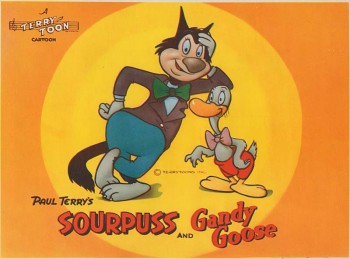 The names are on the credits just as Frank Thomas‘ name is on the credits of Bambi. But I can tell you immediately that Thomas did the scenes of Bambi ice skating, yet I don’t know who did the scene of Woody getting resentful, as Buzz Lightyear gets attention from the other toys. I know that Fred Moore did the scene of Lampwick turning into a donkey in Pinocchio, but I don’t know who did Merida’s mother, Elinor, in Brave. The scenes where the mother is transformed into and acts as a bear are beautifully animated, but the origin of those scenes seem anonymous. I don’t have the slightest clue as to who did them.
The names are on the credits just as Frank Thomas‘ name is on the credits of Bambi. But I can tell you immediately that Thomas did the scenes of Bambi ice skating, yet I don’t know who did the scene of Woody getting resentful, as Buzz Lightyear gets attention from the other toys. I know that Fred Moore did the scene of Lampwick turning into a donkey in Pinocchio, but I don’t know who did Merida’s mother, Elinor, in Brave. The scenes where the mother is transformed into and acts as a bear are beautifully animated, but the origin of those scenes seem anonymous. I don’t have the slightest clue as to who did them.
Grayson Ponti is one of the few who have sites that have praised some excellent cg work, and I can’t be thankful enough for his attention. Check out this post for a sample, but that was written a couple of years ago. We need more frequency and more currency.
I’ve made this complaint before. I talked about Glen Keane‘s work and got lots of hate mail. I said I was trying to learn who did which scenes so that I would know the better animators from the average ones. There were a couple of people who commented on my site and led me to a name or two. But not much changed, not really. I’d very much like it if some of you would comment here and tell me of animators I should be watching. Give me names of people who you think have done some brilliant work in cg films. Tell me the animator, tell me the scenes and I’ll try to offer some appropriate attention.
I don’t have access into the world of the cg artists and animators. I do know a few 2D artists who are working within that world, but it’s the animator who works exclusively in the medium I want to notice and give a little attention to. I need your help. I cannot do it if I don’t know who those animators are at Pixar, Dreamworks, Blue Sky, Disney, Sony and other places. If I don’t know their work I can’t give them credit.
Honestly, for me this year the best animated scenes were many of those of Richard Parker in The Life of Pi. Rhythm and Hues did the work.
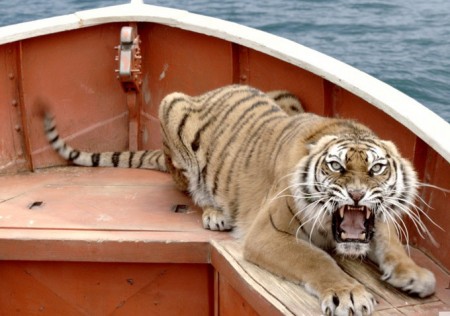
This scene knocks me out every time I see it. Pi is trying to
train the tiger, Richard Parker, and the tiger kneads the wood
of the boat (as any house cat would knead a blanket or its
owner, while accepting the comments of his teen overseer.
I’ve contacted the EFFX house offering to give them any attention on my Blog that they’d like from me. Publicity is publicity. (Of course, there’s been no response, surprise, surprise.) Regardless I’m going to continue promoting this film. I love it. But I’d like to add animator names and key art people responsible for the great work. I need them to contribute to get that part right.
I was also equally astounded by most of the work of the Gollum in The Hobbit. One is straight cgi; the other is what used to be called “motion capture” and is now something much much more. There’s real feeling in both those films, and in both those films those characters exist. There can be no question of it.
Now, I’d like to know who is actually doing the creative work. behind the Pixar, Blue Sky and Dreamworks films. I want to talk with people from SONY or other studios. I have a lot of questions and I want to give focus to some individuals who deserve it.
Curran W. Giddens worked on Horton, Cars 2 and Monsters University. What can he tell me about animation?
Raffaella Filipponi worked on The Croods, Shrek and Over the Hedge. She’s freelanced a lot and is that how theses studios work?
Dave Hardin worked on I am Legend, Alice in Wonderland and Turbo. Can he learn the “art” part moving from job to job?
These people were chosen at random. I don’t know their work even though I’ve seen it. Is there a point when THAT will turn around? Do you have to keep on the move to keep working? Is it time to start promoting responses? We’re not working at Disney on a 15 year job that allows you to move from feature to feature without it hurting you attitude, never mind your work?
Perhaps you think (as I sometimes suspect) that no single person can be given credit for “animating” since so many people have their hands on the steering wheel trying to move those characters forward. If so, say that. If you think there’s a team of people that work wonderfully together, I’d like to know. Essentially, I’d like your help continuing this post. If you don’t want it to be in the comment section of this article but would like to add to the follow-up post I’m going to do, email me. msanimation@aol.com is the best address; it’s the place I check most often. Write as short or as long as you like. If I have to edit it I will, and I’ll let you know when it’ll be posted so you can see it as soon as possible.
Animation &Animation Artifacts &Disney &Hubley &John Canemaker &repeated posts 20 Aug 2012 05:53 am
Fantasia FX – Schultheis – recap
John Canemaker recently completed his latest book about Herman Schultheis and the effects department at Disney’s during the early 40s. It, hopefully, will be published in late 2014. This encouraged me to pull up this piece I posted in Sept/2009. It’s amazing how much information I was able to cull from the photos I found on the DVD.
I’m pleased with this post and am glad to repeat it for those who might not have seen it. John’s book, by the way, is one I’m looking forward to reading. He’s written a bit about it on his website.
- Herman Schultheis was an effects animator who worked on Fantasia. He kept a tight record of the effects they were creating from 1938-1941 and a photo display of how they were done. Schultheis disappeared in 1954 while trekking through Central America, and the notebook was forgotten until his wife’s death in the early 1990s, after which it was discovered by Howard Lowery behind the couple’s bedroom wall.
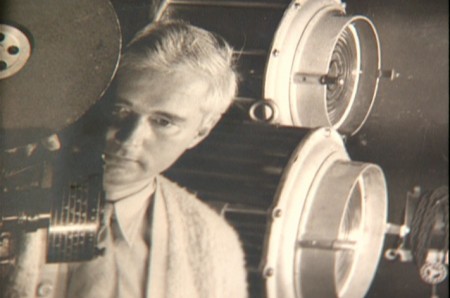
(Click any image to enlarge.)
Herman Schultheis created the book of charts and photos
which gives us a link to the many creative effects in the film.
The book is on display at the The Walt Disney Family Museum. It’s also been digitized so that visitors are able to go through the book, enlarge photos and view it page by page. An interactive display.
Prior to the discovery of the book we were able to figure out a few of the effects. One Disneyland show, in fact, recreated the bubbling lava scene from the Rite of Spring sequence.
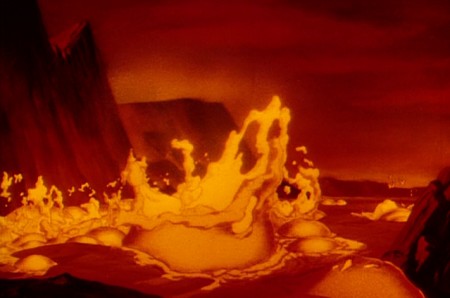
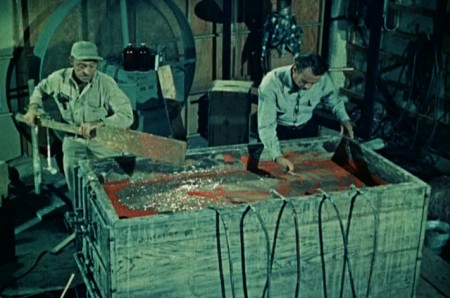
Josh Meador recreated the slow motion shoot of the
boiling concoction used to develop the bubbling lava.
However, the book revealed so much more than we’d understood
about how the superb effects had been crafted.
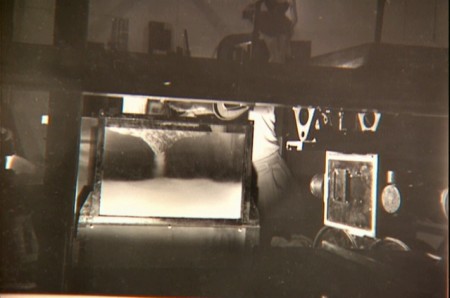
Using a vat of water, they were able to
drop ink into the liquid and film it in slow motion.
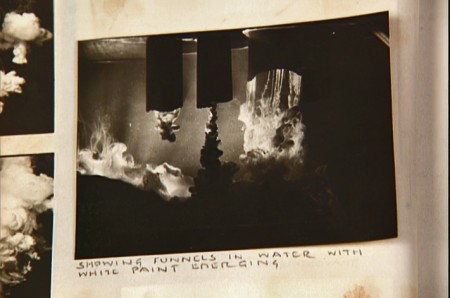
A photo of the ink spilling into the water behind built-in mattes.
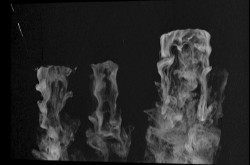
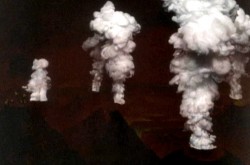
Taking the shot of the ink, they then turned it upside-down.
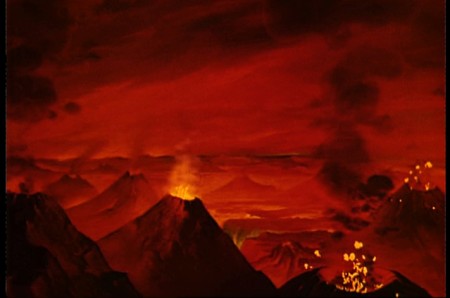
They then superimpose the “smoke” (or ink) over the volcanoes.
This same effect was used in Close Encounters of the Third Kind
to create clouds when the alien ships were moving in on the
farmhouse where the boy and mother lived.
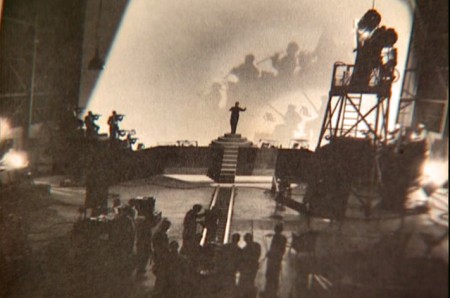
The orchestra was shot on a set with strong, planned shadows.
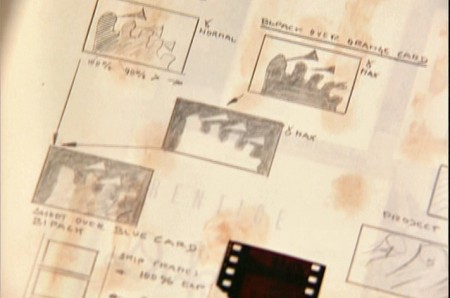
All these shots were orchestrated and planned for color effects.
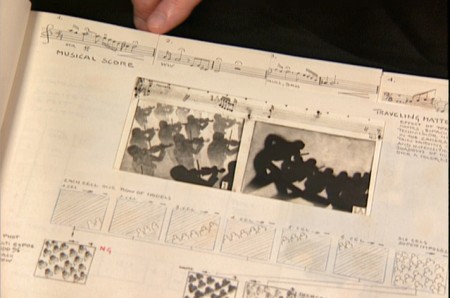
They were also catalogued by Schultheis who kept close
track of the music, as well, in his book. You can see a
page by page breakdown of the score at the top of the page.
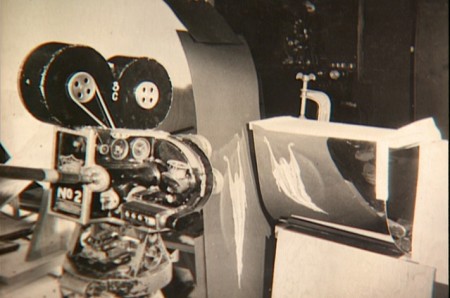
You can see the highly polished sheet of metal (middle left) which reflected
and distorted the animation drawings. This is what the camera photographed
in some of the scenes during the Night on Bald Mountain sequence.
It was also used for the fire in Bambi.
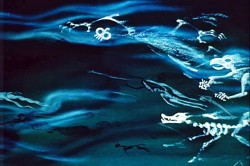 1
1 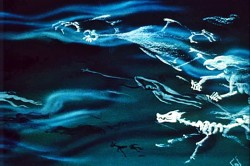 2
2
This scene’s ghosts were shot using that distorted metal reflection.
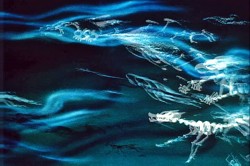 2a
2a 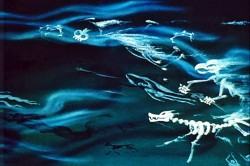 3
3
The ghosts also used a form of cross dissolve.
John Hubley explained to me how that was done, and
we used the technique in Everybody Rides the Carousel.
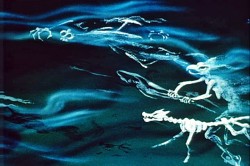 4
4 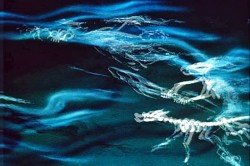 4a
4a
They shot the entire scene at 50% exposure. Then they went back
to the beginning and reshot the entire scene again at 50% exposure.
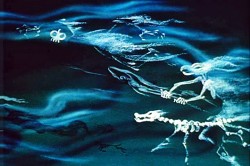 5
5 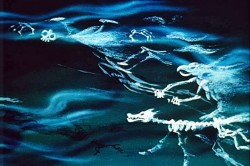 6
6
However on the second shoot, they started by shooting a black frame.
This made #1 fall where #2 should have been, #2 for #3 etc.
This creates a ghostly dissolve effect.
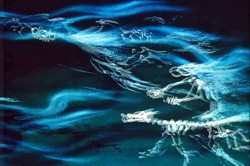 6a
6a 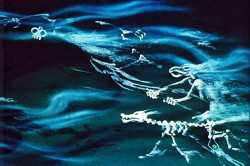 7
7
All of the drawings labelled with an “a” are the double exposures:
2a, 4a, 6a
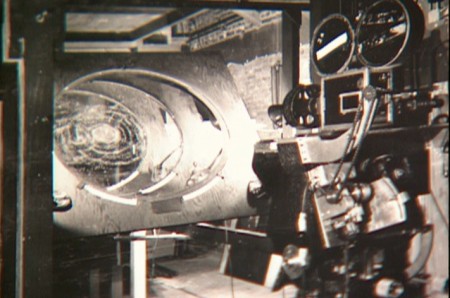
A make-shift circular multiplane camera was built.
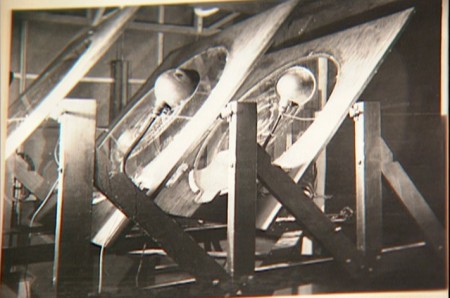
Created out of wooden sheets with holes cut out,
placed so they could shift angles, they were designed to
allow revolving artwork in the circular cut outs.
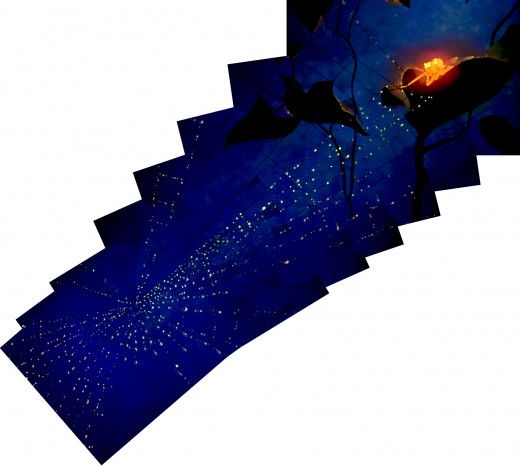
This allowed shooting scenes such as this shot of
a spider web as the camera moved around it
while dew glistened off of it.
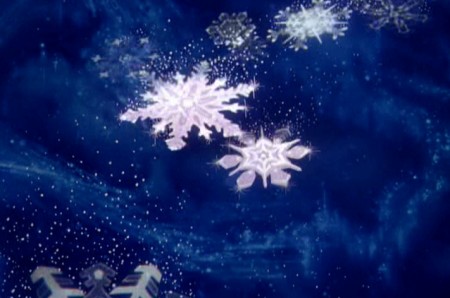
The spinning snowflakes are well explained in Schultheis’ book.
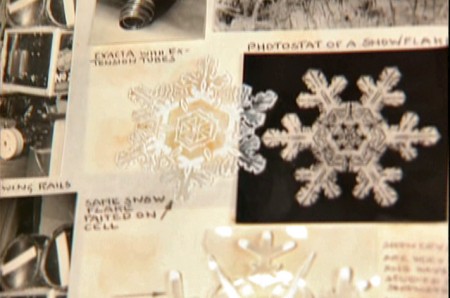
The snowflakes had a detailed construction.
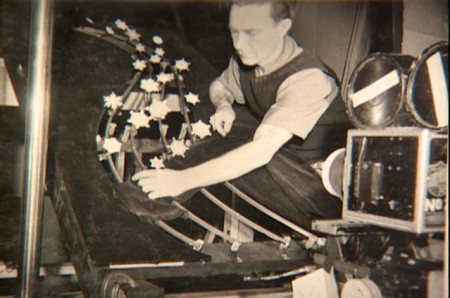
The path of action was intricately defined.
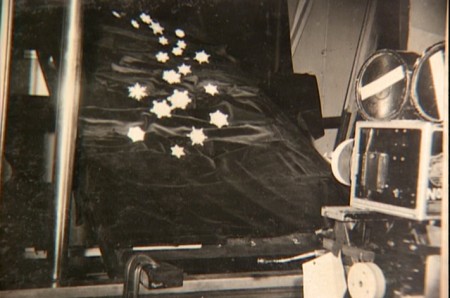
The snowflakes were shot against a sheet of
black velvet hiding the wire guides.
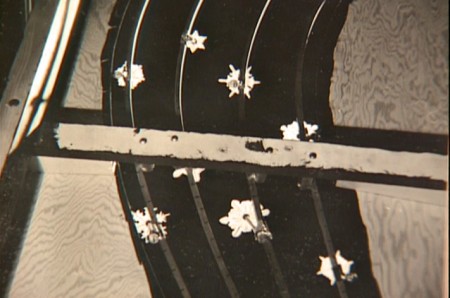
They were shot in tight closeup. From below you can
see the turning gears they were constructed on.
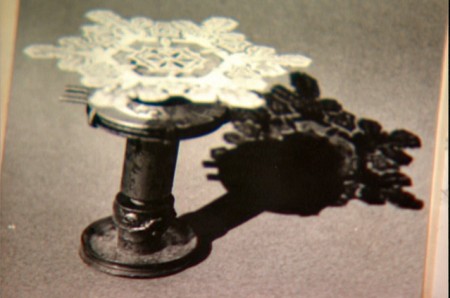
Each snowflake was built on a turning gear
so that they could revolve in their path of action.
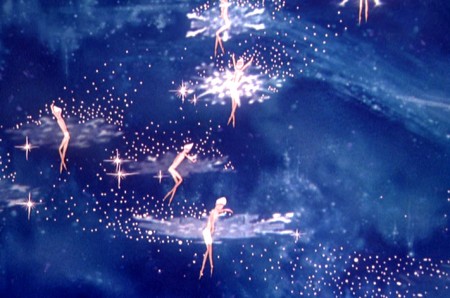
Burn these snowflakes over the multiplane background
and add matching 2D animated fairies within each snowflake,
and you have the finished scene.
Animation &Disney 18 May 2010 10:29 am
Roustabouts – 2
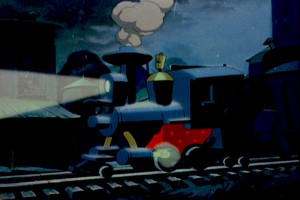 - As stated yesterday, the Roustabout sequence of Dumbo is one of my favorite sequcences in any Disney feature. I love the fact that it is blatantly political in its scope while completely servicing the feature.
- As stated yesterday, the Roustabout sequence of Dumbo is one of my favorite sequcences in any Disney feature. I love the fact that it is blatantly political in its scope while completely servicing the feature.
The bold and dramatic artwork represents nothing so much as Russian poster art of the 20s and 30s. Whether this is accidental or not is open to question, but given the political nature of many of the workers (pre-strike) I think they knew what they were doing. You can see that in the strong chalk drawings, done as preliminary art, and you can see it in the final.
The men’s chorus singing the piece just underscores that theme, and is entirely supportive. (Go to AFilm LA to hear the original recording of this with the King’s Men singing.)
Hans Perk has been posting the drafts for Dumbo, and Mark Mayerson has been posting his excellent Mosaics he creates for the film.
Here, are frame grabs detailing the sequence.
__________________(Click any image to enlarge.)
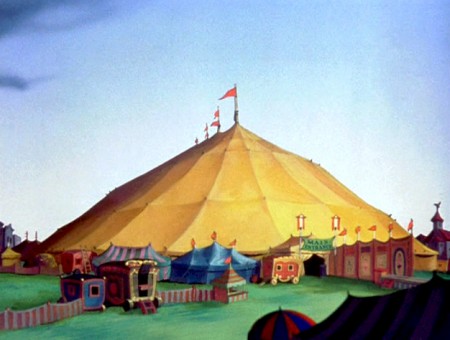
From A Film LA:
Seq. 04.0 “Roustabouts”
Directed by Sam Armstrong, assistant directors Lloyd Richardson and W. Hays, layout Dick Kelsey.
Jack Campbell seems to have animated most of the Roustabouts. Then we find Hugh Fraser, Edwin Fourcher, Jerome Brown, Karl Van Leuven, Russ Dyson, Frank Grundeen, Jim Escalante, Vern Witt, Claude Smith, Sandy Strother, Cornett Wood, Ed Aardal, Miles Pike, George Rowley, Josh Meador and John Reed, most of whom are effects animators.
Animation &Disney &Frame Grabs 09 Sep 2009 07:43 am
Fantasia FX
- Herman Schultheis was an effects animator who worked on Fantasia. He kept a tight record of the effects they were creating from 1938-1941 and a photo display of how they were done. Schultheis disappeared in 1954 while trekking through Central America, and the notebook was forgotten until his wife’s death in the early 1990s, after which it was discovered by Howard Lowery behind the couple’s bedroom wall.
The book will be on display at the The Walt Disney Family Museum when it opens in October. It’s also been digitized so that visitors will be able to go through the book, enlarge photos and view it page by page.
Prior to the discovery of the book we were able to figure out a few of the effects. One Disneyland show, in fact, recreated the bubbling lava scene from the Rite of Spring sequence.

(Click any image to enlarge.)

Josh Meador recreated the slow motion shoot of the
boiling concoction used to develop the bubbling lava.
However, the book revealed so much more than we’d understood
about how the superb effects had been crafted.

Herman Schultheis created the book of charts and photos
which gives us a link to the many creative effects in the film.

Using a vat of water, they were able to
drop ink into the liquid and film it in slow motion.

A photo of the ink spilling into the water behind built-in mattes.


Taking the shot of the ink, they then turned it upside-down.

They then superimpose the “smoke” (or ink) over the volcanoes.
This same effect was used in Close Encounters of the Third Kind
to create clouds when the alien ships were moving in on the
farmhouse where the boy and mother lived.

The orchestra was shot on a set with strong, planned shadows.

All these shots were orchestrated and planned for color effects.

They were also catalogued by Schultheis who kept close
track of the music, as well, in his book. You can see a
page by page breakdown of the score at the top of the page.

You can see the highly polished sheet of metal (middle left) which reflected
and distorted the animation drawings. This is what the camera photographed
in some of the scenes during the Night on Bald Mountain sequence.
It was also used for the fire in Bambi.
 1
1  2
2
This scene’s ghosts were shot using that distorted metal reflection.
 2a
2a  3
3
The ghosts also used a form of cross dissolve.
John Hubley explained to me how that was done.
 4
4  4a
4a
They shot the entire scene at 50% exposure. Then they went back
to the beginning and reshot the entire scene again at 50% exposure.
 5
5  6
6
However on the second shoot, they started by shooting a black frame.
This made #1 fall where #2 should have been, #2 for #3 etc.
This creates a ghostly dissolve effect.
 6a
6a  7
7
All of the drawings labelled with an “a” are the double exposures:
2a, 4a, 6a

A make-shift circular multiplane camera was built.

Created out of wooden sheets with holes cut out,
placed so they could shift angles, they were designed to
allow revolving artwork in the circular cut outs.

This allowed shooting scenes such as this shot of
a spider web as the camera turned around it while
dew glistened off it.

The spinning snowflakes are well explained in Schultheis’ book.

The snowflakes had a detailed construction.

The path of action was intricately defined.

The snowflakes were shot against a sheet of black velvet
hiding the wire guides.

They were shot in tight closeup. From below you can
see the turning gears they were constructed on.

Each snowflake was built on a turning gear
so that they could revolve in their path of action.

Burn these snowflakes over the multiplane background
and add matching 2D animated fairies within each snowflake,
and you have the finished scene.
Animation Artifacts &Daily post 20 Jan 2008 09:19 am
Meador’s Forbidden Planet
Thanks to Jonathan Annand for pointing me to the upcoming Heritage auction which features a number of oversized animation drawings to the film, Forbidden Planet. This is the 1956 Sci Fi film that featured some magnificent animated effects by Joshua Meador.
Meador was loaned to MGM by Walt Disney to supervise the animated effects. The Id Monster he created is made of shimmering blades of fire. When the film was first distributed to television, they thought the creature was too frightening for children and cut out a lot of the animated scenes. Of course, they eventually replaced them.
The movie is an original take on Shakespeare’s The Tempest although it significantly alters the plot points. The music for the film, created by the married team of Louis and Bebe Barron, is a groundbreaking electronic score – more effect sounds than music. It’s somewhat similar in ways to what Bernard Herrmann did for Hitchcock’s The Birds.
This film runs every so often on Turner Classic Movies, and if you’re not familiar with it, you should be. The next showing will be Feb 2nd at 9:15am.
Josh Meador was an effects animator at Disney’s. He joined the studio in the 1930′s and quickly rose through the ranks moving to the effects animation department and ultimately supervising the effects on Pinocchio and Fantasia. He shared an Oscar for his effects work on the big Disney feature 20,000 Leagues Under the Sea.
He lived in La Crescenta, California for years and was an inveterate painter, an artist represented by numerous galleries.
The Disneyland show, “Tricks of the Trade,” gave me Josh Meador’s name back in the 50′s, and I searched it out ever after. I wrote a piece about sending a letter to him in another post.
While in the Navy, I was stationed in Monterey, California. There was a gallery in Carmel that had a one man show of his artwork. I made numerous trips to the gallery, hoping that he might be there one of those trips. No such luck. And I was too shy to try to seek him out on my own.
He died in 1965 of a congenital heart defect.
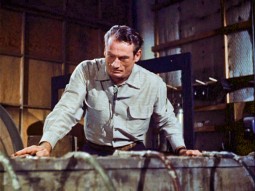 _
_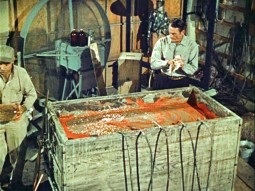
These images were taken from the Disenyland TV show “Tricks of the Trade”. Meador reenacts the study of boiling bubbles for Fantasia’s Rite of Spring segment.
As a teenager, for an early 8mm film of my own, I shot in super-slow motion boiling gravy my mother was cooking. The lens fogged through much of it creating an eerie mist. It ended up being very interesting footage I used for one of my early films.
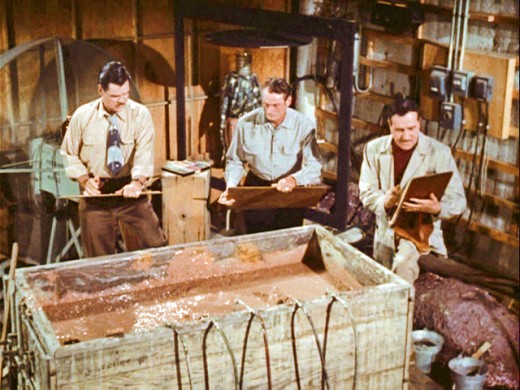
Here’s Meador flanked by Jack Boyd, on the left, and Dan McManus, on the right.
They were other leading effects animators at the studio.

_
- Getting a bit more current, Brad Bird appeared yesterday as a guest on NPR’s news game quiz show, Wait, Wait. Don’t Tell Me !.
You can hear his segment here on the NPR site.
Animation Artifacts &Daily post 15 Jan 2007 08:59 am
A Bit of History
- Back in the mid-Fifties, a young boy, I was a fan of several people in the Disney studio. Like any kid who was a fan 3000 miles from a movie studio, I sent fan letters to my stars. Eyvind  Earle, Joshua Meador, Marc Davis and others received my kid fan mail. Maybe once every four or five months I’d send off another letter.
Earle, Joshua Meador, Marc Davis and others received my kid fan mail. Maybe once every four or five months I’d send off another letter.
I started getting postcards back from what I presume was the mailroom at the studio. Just as Lana Turner would have sent back an 8×10 glossy with a signature by someone, the Disney studio sent out postcards.
Somehow, none of these were saved. I recently found one such card on ebay and sucked it for memorabilia’s sake. This card, to the left, is smaller than the ones originally sent out, but the picture’s the same. I remember one which was very different. It must have had fifty characters in it – a lot of the feature characters (somehow I remember Brer Rabbit) – were set within drawn frames and gathered on this card. That’s right, about fifty frames on a little card – maybe 5×7 – so all the characters were small. Just right for a kid’s small hands.
.
(Click on images to enlarge.)
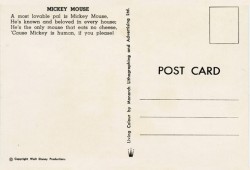 There was always some innocuous writing on the back of the card. “Best wishes from Walt Disney,” or some such phrase. After the first card, I lost interest in the printed signature. Anyway, I had sent my letter to Ward Kimball; why did Disney sign it!
There was always some innocuous writing on the back of the card. “Best wishes from Walt Disney,” or some such phrase. After the first card, I lost interest in the printed signature. Anyway, I had sent my letter to Ward Kimball; why did Disney sign it!
My favorite return was something I’d gotten from a letter sent to Joshua Meador.
Aside from the postcard there was a xerox copy of an article written in 1933. “The History of the Animated Cartoon” by Earl Thieson was written for the journal of the Society of Motion Picture Engineers. A nicely printed copy of the article was sent to me anonymously. It took a while to see that the document was written so early and excluded 2/3 of the history of animation that I knew. It made me feel that my one fan letter had hit home and was read by someone other than the studio gate guard.
- Yesterday, the New York Times featured an article about comic strip collectors and shows how some individuals are helping to save a medium that is in danger of dying. Gasoline Alley serves as the example of strips that are kept alive by these fans. You can purchase volumes of Gasoline Alley from Drawn and Quarterly or Amazon.
Daily post 05 Jan 2006 08:46 am
Emily & Blackwings
Varied Notes:
I was enthralled with the program of Emily Hubley’s work at MOMA last night. She has a unique voice in  animation, and she takes it and runs with it as few animators are doing. Her presentation was designed to focus on collaborations but seemed to highlight music in animation. How thrilling to hear one piece to the music of Yo Lo Tengo, and the see the same piece reworked to music composed by Sue Garner and performed live against the film. The energy of the live music changed the film completely; it became more haunting and poignant – a very different film utilising the same imagery. Don Christensen has composed the music for a number of Emily’s films, and he adds enormous effect to all he’s done. It was a great show.
animation, and she takes it and runs with it as few animators are doing. Her presentation was designed to focus on collaborations but seemed to highlight music in animation. How thrilling to hear one piece to the music of Yo Lo Tengo, and the see the same piece reworked to music composed by Sue Garner and performed live against the film. The energy of the live music changed the film completely; it became more haunting and poignant – a very different film utilising the same imagery. Don Christensen has composed the music for a number of Emily’s films, and he adds enormous effect to all he’s done. It was a great show.
Attending a lot of animation events in NYC, one sees a varied mix of animation peoople at different events. Those who go to Emily’s films, generally aren’t the people who’d go to a Warners show, and Bill Plympton brings out a very different mix. It’s an entertainment in itself, watching the varied faces. Eventually, I’ll have to get a camera to add some photos. How pleasant to be ushered into the crowded MOMA lobby by Will Rosenthal and son, Max. Janet Benn and Thelma Schenkel were also among the early arrivals. Inside, I saw John Canemaker, Biljana Labovic and Candy Kugel. At the gathering, afterward, were Jeff Scher, Jeremiah Dickey and MOMA coordinator, Charles Silver.
A Christmas Card posting I missed turned out to be one of the most interesting for me. On Jen Lerew’s Blog, Blackwing Diaries, she posted two cards from the 50′s Disney: a 1955 Christmas card featuring the Mickey Mouse club and another from 1956 showing Mickey welcoming us into the magic of Disneyland.
Back in the mid-Fifties, I sent a fan letter to Joshua Meador. I had to have been 10 years old. What came back was a postcard, a largish postcard of Disney standing with an airbrushed Mickey on his Disneyland TV desk. It wasn’t the airbrush they do today trying to make everything look like real dolls, but it was an airbrush that just added highlights. I quickly learned that I could get more and different cards by sending more letters, and I did. I kept them for years, but somehow lost them in a move.
My favorite postcard was one with about fifty drawn picture frames. Within each was another Disney character. All of the images were tiny, but somehow Brer Fox stands out in my memory. He was coming out of his frame. I’d love to see that card again. Anyway, I did receive that very same Christmas card welcoming me into Disneyland, and I have to thank Jen for posting that card and bringing back some pleasant memories.
By the way, speaking of Blackwing Diaries, maybe if we all joined together we could get Eberhard Faber . . . er . . . Faber-Castell to produce Blackwing Pencils again. It’s amazing to learn that people other than animators swore by these pencils – including a lot of celebrities. The pencils sell for $250 a box on ebay.
